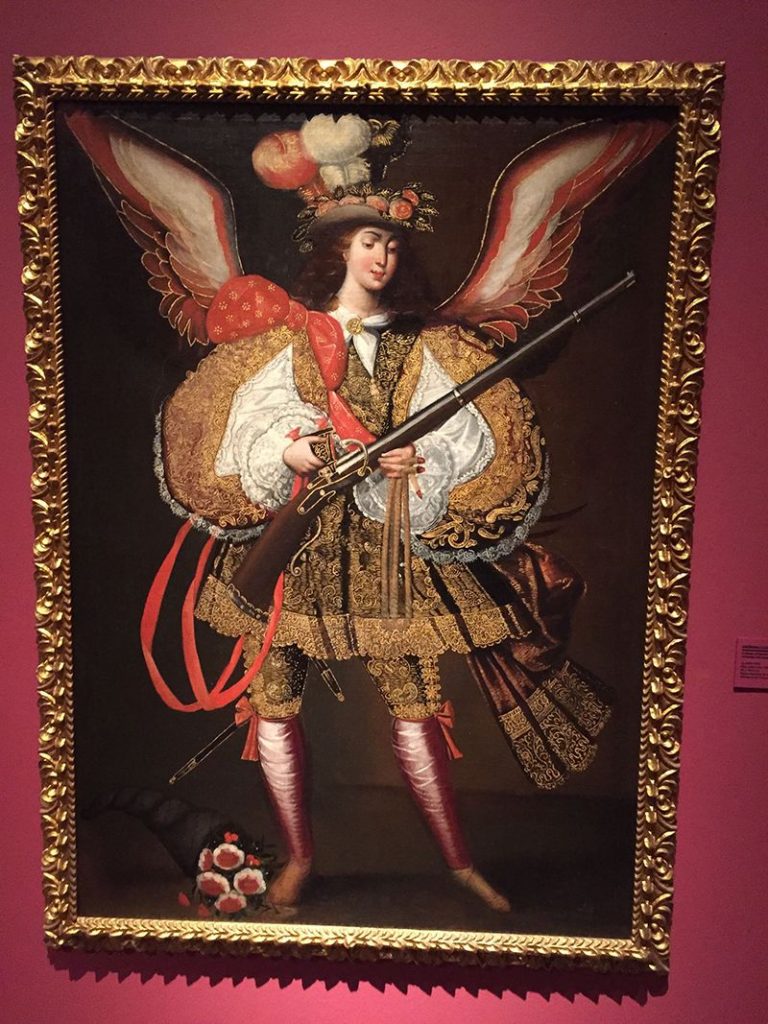The students participating in Honors Passport: Peru were introduced to the Cusco School of painters in H2P3, the third and final course in the Honors Humanities Program (H2P) sequence. The Cusco School, one of the most important painting movements in the Americas, grew out of the Spanish conquerers’ efforts to convert the Incas to Catholicism. The students have seen many fine examples of this sometimes unusual marriage of themes and motifs in churches and museums throughout Peru. Honors College Fellow and English major Dylan DeLay reports.
The most striking and shocking depictions at the Cusco School for me were the Archangels with arquebuses. Everything else was pretty tame and expected, but angels with guns definitely got my attention. European artists tend to paint angels with more mystical powers, but these angels are depicted with the most physical of weapons. This shows how the painters of the Cusco School see power. The Spanish came in and took over using their guns, something completely foreign, and likely quite mystical to the indigenous people of the time. These angels mixed the dominative powers of the Spanish with the religion of the Spanish because the Spanish had conquered them so completely.
I think likening the angels to the Spanish could indicate two things: A) that they still possessed the view that the Spanish were almost godlike, or B) that they are humanizing and characterizing the angels as enemies, as they would have characterized the Spanish when they were being conquered. We have seen in other instances where they depict the Virgin Mary but syncretize her with Pachamama [Earth Mother venerated by the indigenous people of the Andes], so I am compelled to believe the latter of the two, if maybe less drastic than enemies.
The demystification of the angels is the most important change in painting these religious subjects. Andean religion is all about connecting them to the world around them, so it focuses on the physical elements of the world. The angels in these paintings have been taken from a celestial scene or one focused on a religious event and are presented as the subject. The artists are Andean-izing Christianity in their art, and in their architecture, as we have seen all over in this trip. This new way of painting shows the emergence of the Andean style of art mixing with Spanish-Christian subjects. Freed from being under the thumb of the Spanish guilds, Andeans were allowed to accurately portray how they view the religion that has been imposed on them. Whether subtle jabs at Christianity are intentional or not, the paintings reveal much about how their minds, which were solidly based in physicality, were processing a religion that largely exists in a cognitive realm.


